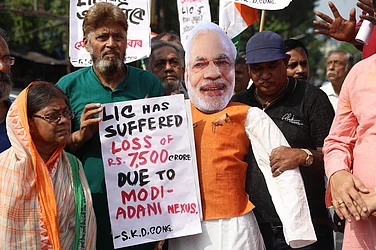The Union Cabinet on Saturday approved the Unified Pension Scheme (UPS) which will be set to take effect on April 1, 2025 and benefit 23 lakh central government employees.
Prime Minister Narendra Modi-led cabinet approved the Unified Pension Scheme that promises an assured pension of 50 per cent of salary for employees who joined after January 1, 2004, under the National Pension System (NPS).
The introduction of the UPS is seen as a strategic move ahead of upcoming Assembly elections in Jammu & Kashmir, Haryana, Maharashtra, and Jharkhand. The decision follows extensive consultations led by a committee under TV Somanathan, the former finance secretary.
Key Features of the Unified Pension Scheme (UPS)
Guaranteed Retirement Pension: Retirees will receive a fixed pension amounting to 50 per cent of their average basic pay over the last year before retirement, if they have served at least 25 years. For shorter service periods, the pension will be adjusted proportionally, with a minimum service requirement of 10 years.
Family Support Pension: If an employee passes away, their family will receive a pension equal to 60 per cent of the employee’s basic pay. This benefit will start immediately.
Minimum Guaranteed Pension: Employees retiring after at least 10 years of service will get a guaranteed minimum pension of Rs 10,000 per month.
Inflation Protection: The UPS includes a provision to adjust pensions for inflation, covering the assured pension, family pension, and minimum pension to maintain their value over time.
Additional Gratuity: In addition to the pension, retirees will receive a lump-sum gratuity payment. This will be 1/10th of their monthly pay plus dearness allowance for every six months of service, not affecting the amount of the assured pension.
How Is UPS Different From NPS?
This new scheme promises government employees a guaranteed pension upon retirement, addressing long-standing concerns with the New Pension Scheme (NPS).
The NPS, which is based on market-linked contributions rather than a fixed pension amount, has faced criticism from government employees and opposition parties.
Several opposition-ruled states—Himachal Pradesh, Rajasthan, Chhattisgarh, and Punjab—have reverted to the Old Pension Scheme (OPS) in response to these concerns.
Information & Broadcasting Minister Ashwini Vaishnaw highlighted that the UPS addresses employees' demands for pension reform and contrasts with the NPS by ensuring a fixed pension amount.
How Was NPS Different From OPS
The National Pension System (NPS) has replaced the old pension scheme, known as the Defined Benefit Pension System (DBPS). Under the DBPS, retirees received a pension based on their last-drawn salary, which amounted to 50 per cent of this salary.
In contrast, the NPS operates as a Defined Contribution Pension System (DCPS), where both the employer and employee make contributions to a pension fund during the employee's career.
Upon retirement, the NPS allows individuals to withdraw up to 60 per cent of the accumulated corpus tax-free. The remaining 40 per cent is used to purchase an annuity, which provides a pension roughly equivalent to 35 per cent of the last-drawn salary.
The NPS was introduced for employees joining the central government, including central autonomous bodies (excluding the Armed Forces), from January 1, 2004, onward.
Many state governments have also adopted the NPS for their employees joining after a specified date.
The shift from DBPS to DCPS aims to provide a more sustainable pension framework by linking retirement benefits to individual contributions and market performance.





























